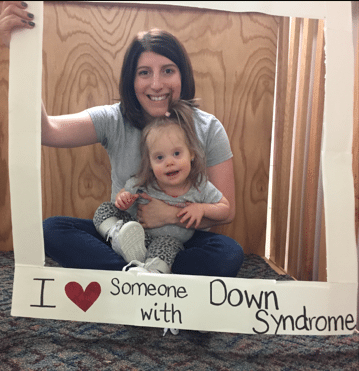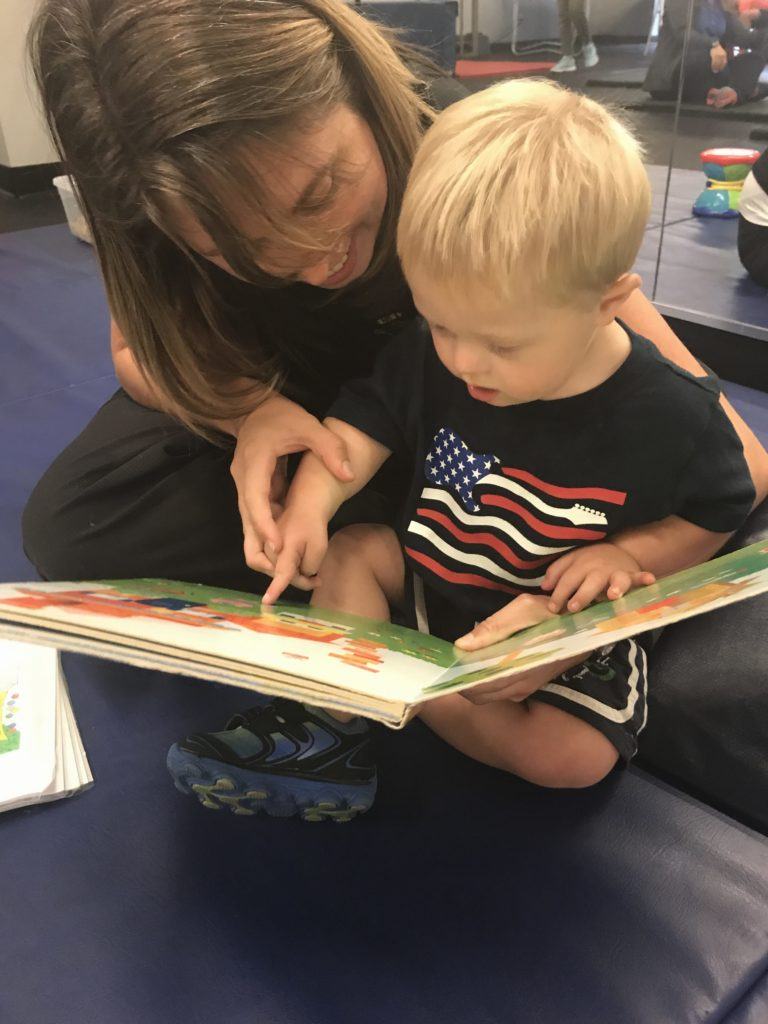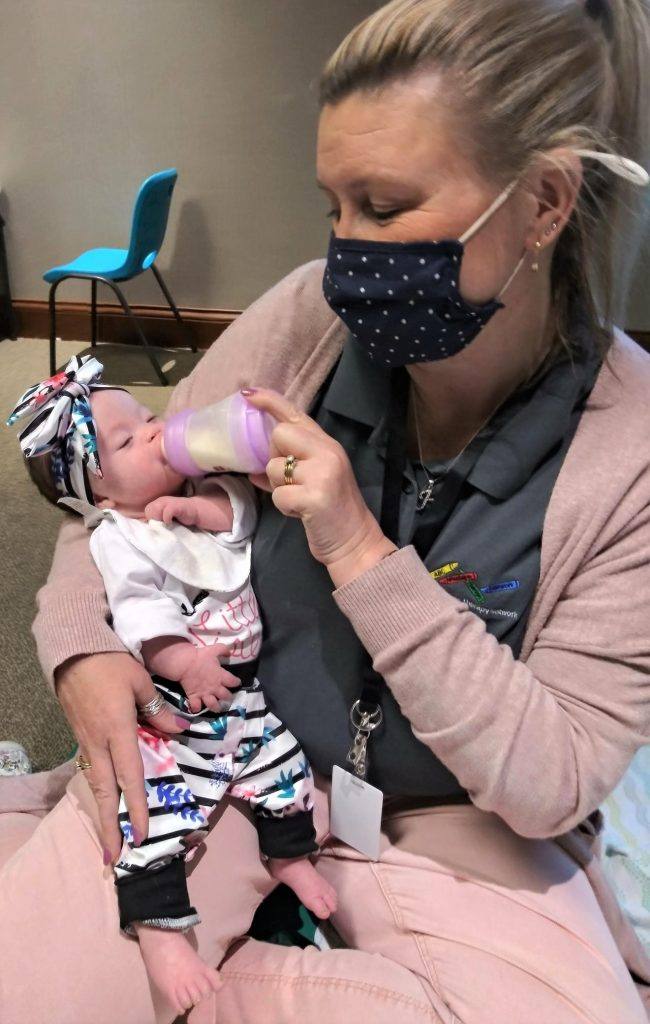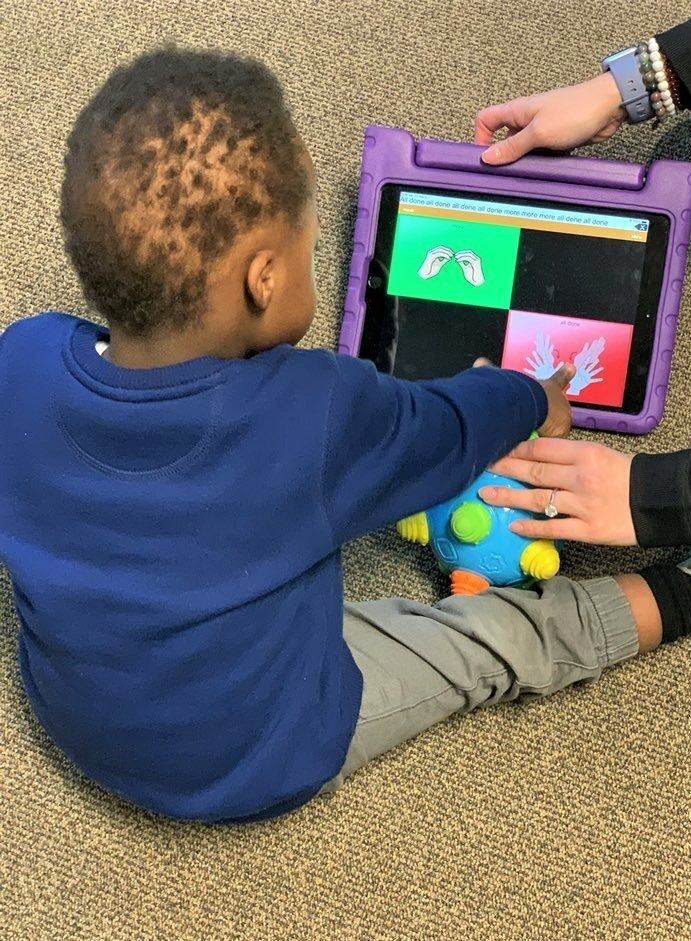The Speech and Language Path
Your child’s speech therapist will design a home exercise program that is specific to your child’s needs. Each phase is a BIG STEP to being able to EXPRESS WANTS AND NEEDS!
Phase One:
- Waves bye bye
- Takes turns vocalizing
- Points/gestures
- Babbles and strings sounds together (i.e. mamamamama)
- Eats pureed food by bringing their lip down to clear the spoon and munches on meltable solids (i.e. puffs)
Interesting Facts: Expressive Language
Sign language encourages expressive language development
Tip: Name everything in their world to increase the # of words they know
- Name everything in their world to increase the number of words they understand
- Use a variety of words. For example, do not call all footwear shoes but name them specifically like slipper, boot, flip flop and sandal.
- Use descriptive words. Example: big green leaf or fast white car
Phase Two:
- Progressively increases the number of words they can say
- Begins to combine 2 words, such as “all done”
- Responds to yes/no
- Retrieves items when requested
- Identifies body parts
- Eats coarsely chopped food
Phase Three:
- Converses in sentences
- Asks questions
- Responds to “wh” questions
- Follows 3 step commands
- Eats table with mixed textures progressing to adult food
Interesting Facts: Receptive Language
Children understand many more words than they can say.
Phase Four:
- Others can understand what is said more and more
- Continues to increase number of words can say/sign
- Asks questions to get more information
- Uses contractions (don’t)
Phase Five:
- Uses a variety of sentences
- Continues to increase number of words can say/sign
- Can tell a story with a plot
- Most people can understand when talking
- Engages in play with others
- Uses pronouns correctly (I, me, you, he, she)
Interesting Facts: Feeding
Because low tone impacts the coordination and strength of the mouth muscles, and because we use the same muscles to talk that we use to eat, we often see feeding issues with children who have Down Syndrome. Often, they have difficulty chewing the food (because of the strength of their jaw), moving food side to side, and keeping food in the mouth. You may find your child often loses food from the front of the mouth, either because they keep their mouth open during eating or because their tongue pushes it out. Because of the low tone, their tongue prefers to move front to back, instead of side to side (which is more challenging and is required to eat foods such as meats and breads). Your child may prefer to eat only soft and easy to eat foods (that don’t require much chewing) because of this.
Some great ways to encourage feeding skills:
- When your child is eating purees, make sure they bring their lip down to clear the spoon. Instead of you dragging the spoon against the roof of their mouth or upper lip to clear the spoon.
- Blowing bubbles (this will encourage lip closure and decreased drooling and food loss and as an added bonus, work on respiration skills for speech and feeding).
- Blowing whistles. Whistles come in all different shapes and sizes and each one requires a different mouth position. Ask your child’s speech therapist what type is best for your child.
- If your child is eating solid foods, place the pieces of solid food on the side of their mouth. This encourages chewing, and decreases the chance that they will push it straight out of their mouth
Straw Cup vs Sippy Cup
Straw cups are best and this is why. A suck comes from the back of your mouth. A spout of a sippy cup ends at the front of your mouth, so it encourages the mouth to suck using the wrong part of the mouth. It is really that simple. Your child’s speech therapist can help you find the straw cup that is best for your child.
Developmental Checklist
Is your child meeting their developmental milestones?
 Skip to content
Skip to content




